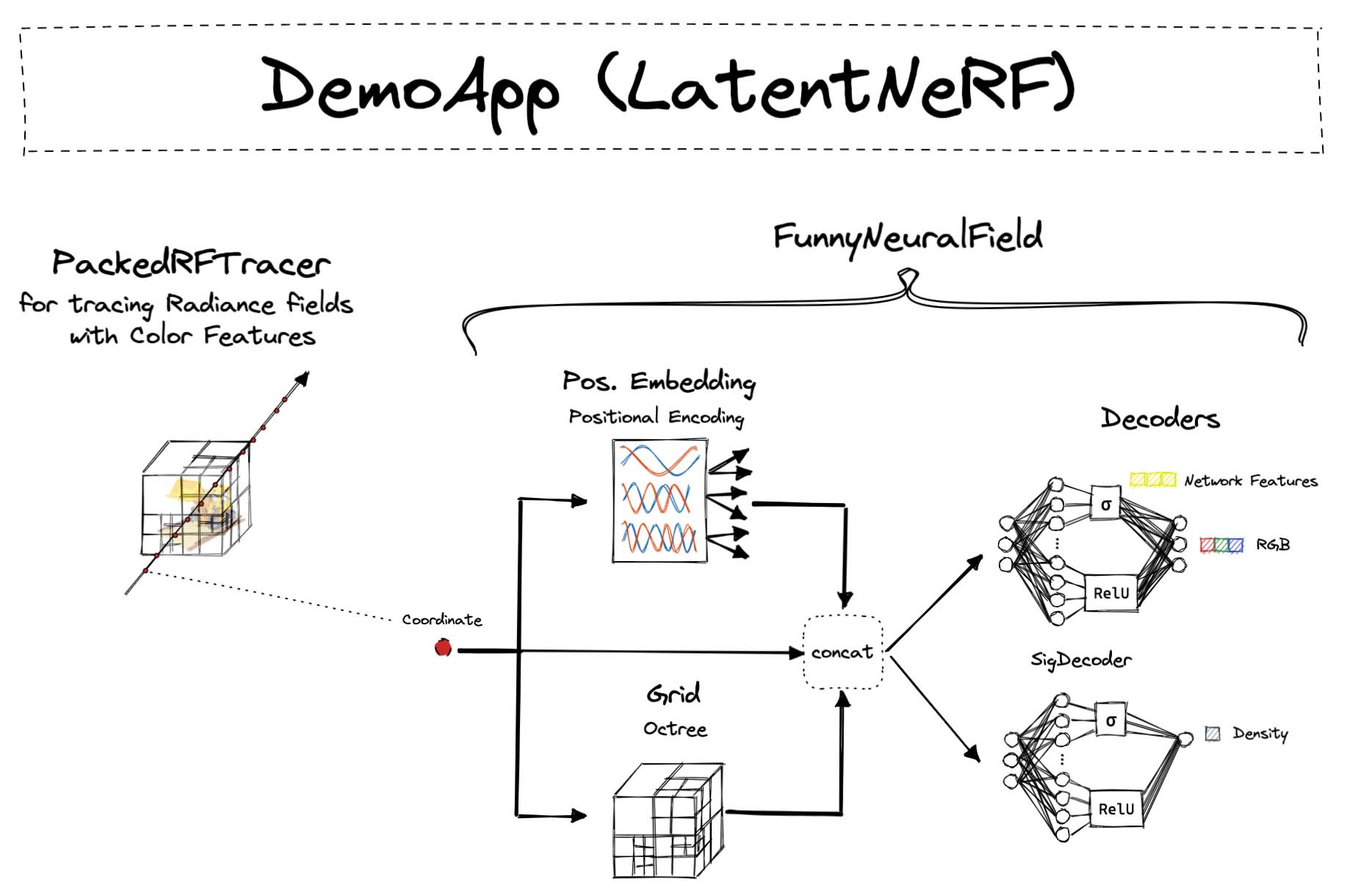NeRF with Traced Latents (SIGGRAPH 2022 Demo)#
This example shows how to add a new type of Neural Field to wisp. Specifically, the newly added Neural Field exposes some of its latent channels to the tracer. To conclude the demo, an interactive demo app which renders the latent color channels is created.
A full video walkthrough is available here.
Overview#

Running the Demo#
The simplest configuration uses an Octree grid:
cd /examples/latent_nerf
python3 main_demo.py --config demo_octree.yaml --dataset-path /path/to/nerf_lego
You can also experiment with a faster, alternative configuration which uses the Hashtable:
cd /examples/latent_nerf
python3 main_demo.py --config demo_hash.yaml --dataset-path /path/to/nerf_lego
For brevity, this example omits the pruning operation, which leaves white artifacts around the object.
Adding the pruning operation from NeuralRadianceField is straightforward and left as an exercise for the reader :)
Additional datasets can be easily supported by changing the config.
i.e. try modifying the config to:
dataset: autoconfig(RTMVDataset). See app/nerf/ for more details.
Files#
funny_neural_field.py contains:
The implementation of the custom
SigDecoder, with a specialized forward function that exposes 3 latent channels.The initialization of the feature grid, positional encoding, and decoders.
2 forward functions for the tracer to invoke:
rgba()andcolor_feature(). The example shows how to register these.
demo_app.py is the interactive app which visualizes the optimization process.
It includes additional logic for defining the new color_feature channel.
demo_octree.yaml and demo_hash.yaml are the configuration files used to run this example.
main_demo,py is the main script for registering the new neural field class and running the interactive demo.


